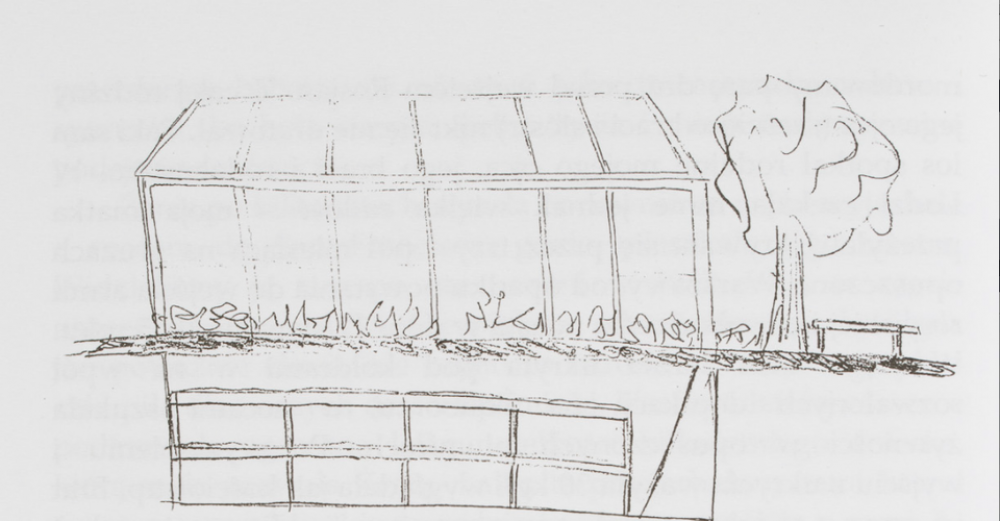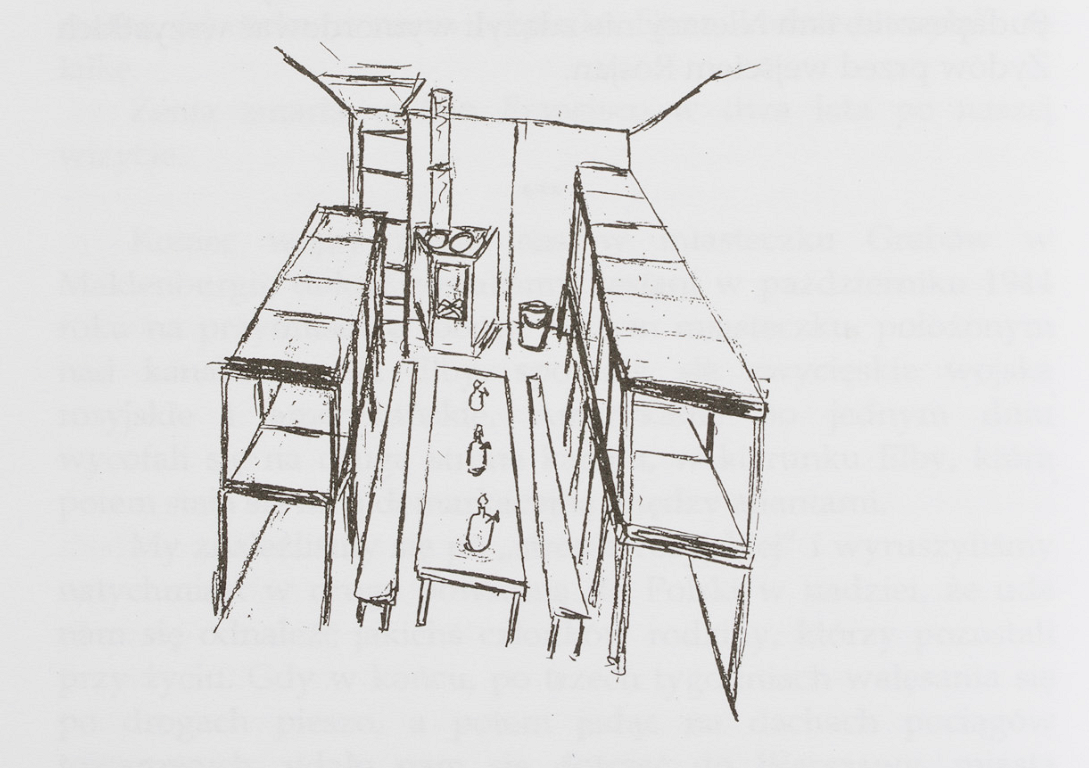- News
- Events
- Oneg Shabbat
- Collections
- Research
- Exhibitions
- Education
- Publishing Department
- Genealogy
- About the Institute
- Bookstore


Drawing by Orna Jagur, who left the bunker before denunciation
On 7th March, 1944, Gestapo officers arrived at 81 Grójecka Street, accompanied by the Polish "blue" policemen from the 23rd post. One group of them went to the house of the Wolski family and began beating Mieczysław Wolski. At the same time, another group surrounded the orangery under which the bunker „Krysia” was. They knew where and who to look for. According to the account of Mieczysław Wolski’s mother, quoted in memoirs of Orna Jagur (who for eight months hid in „Krysia”), the Germans were to shout "You damn Jewish servant, you wanted to hide Jews!”
The Germans dragged Mieczysław Wolski to a glasshouse and started shouting and shooting aimlessly, forcing those hiding to leave the shelter. Mrs Wolska said that the first to come out were mothers with children, then men. The silence was sometimes broke by a cry of a woman and shouting of the Germans. The last ones to leave the bunker were Janusz Wysocki, Wolski’s nephew and Szymek, a young Jew who helped Janusz with maintaing the shelter. One of the hiding ones, lawyer Tadeusz Klinger (Orna Jagur’s father) managed to take cyanide and died on the spot. The rest, including Mieczysław Wolski and Janusz Wysocki, were loaded by the Germans onto the trucks and taken to Pawiak. The glasshouse and the bunker were blown up with grenades.

As Samuel Kassow writes in „Who Will Write Our History?”, referring to the report of writer Jechiel Hirschaut, in Pawiak a plan to rescue Ringelblum was made, but he refused finding out that he would have to leave his wife and son. According to Hirschaut, Ringelblum was tortured by the Gestapo, who wanted him to give them information about the Jewish underground. During the last meeting between the writer and the historian in a cell, looking at son Uri, Ringelblum was to say „This little, what is he guilty of? Because of him my heart is breaking” and then ask Hirschaut „Is dying difficult?”
Historians usually write that Ringelblum, including the other residents of „Krysia” and those hiding them, were led out of Pawiak and shot dead among the ruins of the ghetto a few days after their arrest. However, reports of the Prison Section of the Delegation of the Polish Government in Exile in Poland from 10th and 16th March, 1944 (AAN, 202/II–17) cast light on the possibility of establishing the exact date of Ringelblum’s death. The first one includes information about the discovery of the bunker and transport of the hiding ones to Pawiak: „24 Jewesses and 16 Jews were brought. A very big catch: fully clothed and money hidden in buttons, jewellery, big sums of money.” In the second report we read, „On 10.03 all Jews captured in a bunker in Grójecka street were shot dead.” Maybe, Mieczysław Wolski and Janusz Wysocki also died with them, shot by the Germans.
The death of Emanuel Ringelblum and the residents of „Krysia” has also one mystery — we do not know exactly who the informer was. According to one version Mieczysław’s ex-girlfriend was supposed to be the one who informed the Gestapo as a revenge for breaking up with her. The other says that it was Jan Łakiński. According to the announcement of the Warsaw Special Court printed in „Biuletyn Informacyjny” on 30th March, 1944, he was sentenced to death „for collaboration with the occupier and tracking down Polish citizens of Jewish descent.”